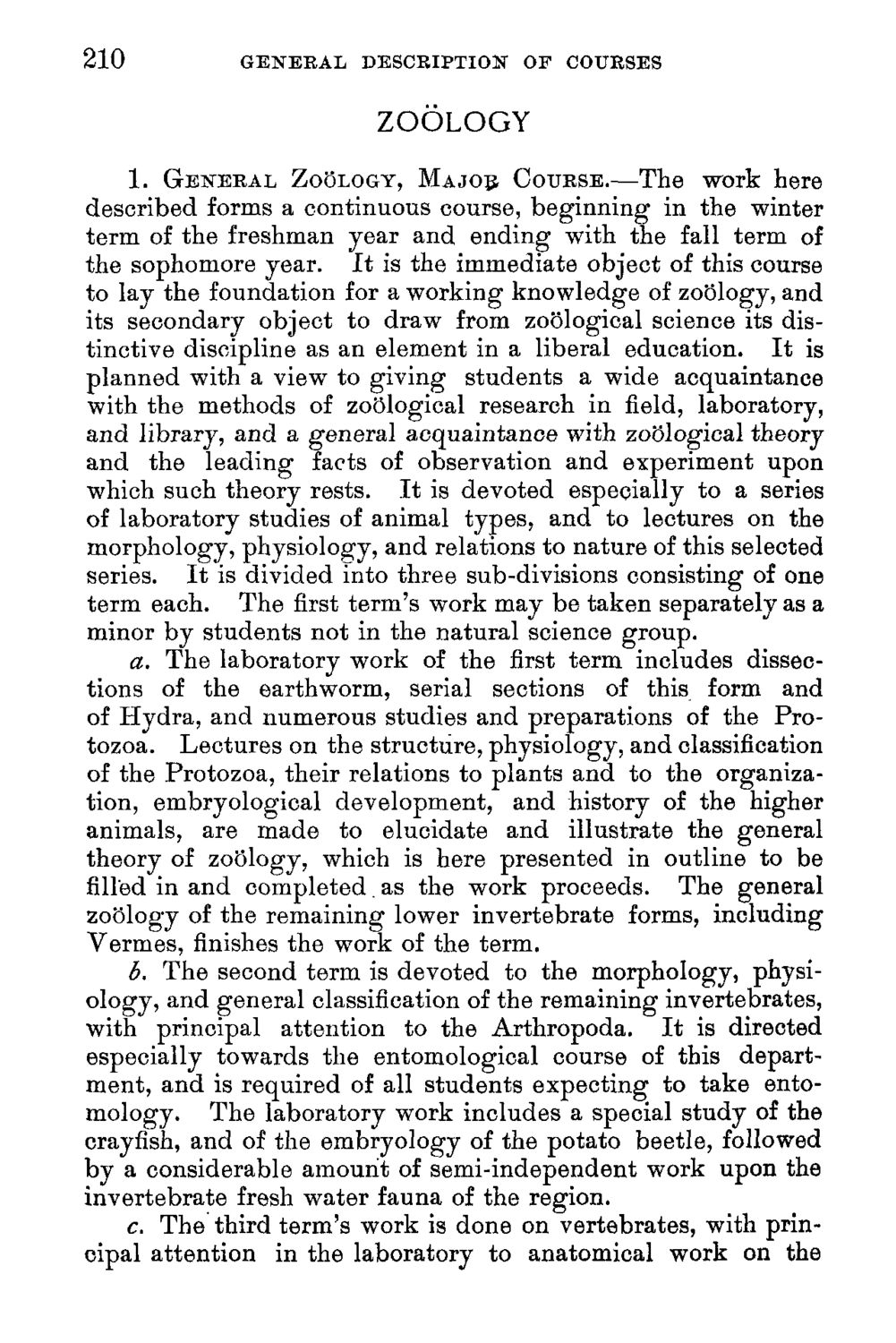| |
| |
Caption: Course Catalog - 1895-1896
This is a reduced-resolution page image for fast online browsing.

EXTRACTED TEXT FROM PAGE:
210 GENERAL DESCRIPTION OF COURSES ZOOLOGY 1. GENERAL ZOOLOGY, MAJOR COURSE.—The work here described forms a continuous course, beginning in the winter term of the freshman year and ending with the fall term of the sophomore year. It is the immediate object of this course to lay the foundation for a working knowledge of zoology, and its secondary object to draw from zoological science its distinctive discipline as an element in a liberal education. It is planned with a view to giving students a wide acquaintance with the methods of zoological research in field, laboratory, and library, and a general acquaintance with zoological theory and the leading facts of observation and experiment upon which such theory rests. It is devoted especially to a series of laboratory studies of animal types, and to lectures on the morphology, physiology, and relations to nature of this selected series. It is divided into three sub-divisions consisting of one term each. The first term's work may be taken separately as a minor by students not in the natural science group. a. The laboratory work of the first term includes dissections of the earthworm, serial sections of this form and of Hydra, and numerous studies and preparations of the Protozoa. Lectures on the structure, physiology, and classification of the Protozoa, their relations to plants and to the organization, embryological development, and history of the higher animals, are made to elucidate and illustrate the general theory of zoology, which is here presented in outline to be filled in and completed. as the work proceeds. The general zoology of the remaining lower invertebrate forms, including Vermes, finishes the work of the term. b. The second term is devoted to the morphology, physiology, and general classification of the remaining invertebrates, with principal attention to the Arthropoda. It is directed especially towards the entomological course of this department, and is required of all students expecting to take entomology. The laboratory work includes a special study of the crayfish, and of the embryology of the potato beetle, followed by a considerable amount of semi-independent work upon the invertebrate fresh water fauna of the region. c. The third term's work is done on vertebrates, with principal attention in the laboratory to anatomical work on the
| |